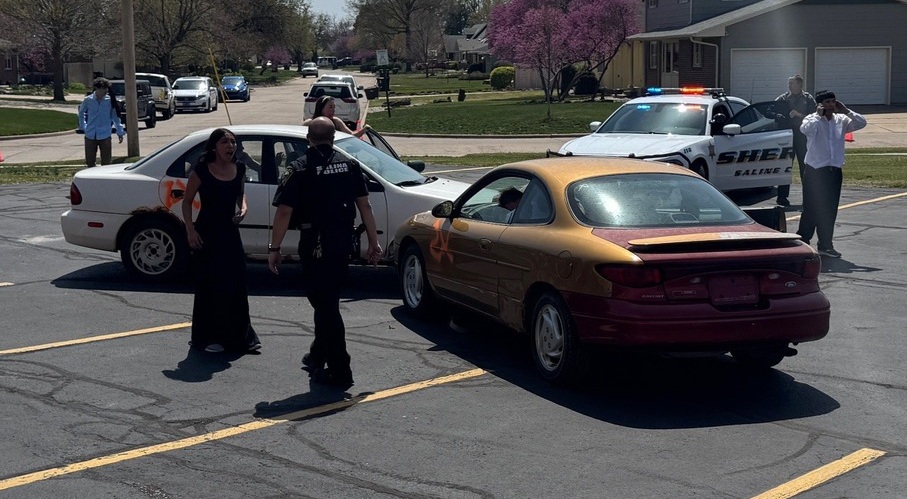Total solar eclipses occur every year or two or three, often in the middle of nowhere like the South Pacific or Antarctic. What makes Monday’s eclipse so special is that it will cut diagonally across the entire United States.
The path of totality – where day briefly becomes night – will pass over Oregon, continuing through the heartland all the way to Charleston, South Carolina. Those on the outskirts – well into Canada, Central America and even the top of South America – will be treated to a partial eclipse.
The last time a total solar eclipse swept the whole width of the U.S. was in 1918.
No tickets are required for this Monday’s show, just special eclipse glasses so you don’t ruin your eyes.
Some eclipse tidbits :
WHAT’S A TOTAL SOLAR ECLIPSE?
When the moon passes between Earth and the sun, and scores a bull’s-eye by completely blotting out the sunlight, that’s a total solar eclipse. The moon casts a shadow on our planet. Dead center is where sky gazers get the full treatment. In this case, the total eclipse will last up to 2 minutes and 40-plus seconds in places. A partial eclipse will be visible along the periphery. Clouds could always spoil the view, so eclipse watchers need to be ready to split for somewhere with clear skies, if necessary.
WHAT’S THE ECLIPSE PATH?
The path of totality will begin near Lincoln City, Oregon, as the lunar shadow makes its way into the U.S. This path will be 60 to 70 miles wide (97 to 113 kilometers); the closer to the center, the longer the darkness. Totality will cross from Oregon into Idaho, Wyoming, Nebraska, Kansas, Missouri, Illinois, Kentucky, Tennessee, Georgia, North Carolina and, finally, South Carolina. It will also pass over tiny slivers of Montana and Iowa. The eclipse will last longest near Carbondale, Illinois: two minutes and 44 seconds. The biggest cities in the path include Nashville; Columbia and Charleston, South Carolina; Salem, Oregon; Casper, Wyoming; and just partially within, St. Louis and Kansas City, Missouri.
LAST TOTAL SOLAR ECLIPSES IN U.S.?
Hawaii experienced a total solar eclipse in 1991. But the U.S. mainland hasn’t seen a total solar eclipse since 1979, when it swooped across Oregon, Washington state, Idaho, Montana and North Dakota, then into Canada. Before that, in 1970, a total solar eclipse skirted the Atlantic coastline from Florida to Virginia. Totality – or total darkness – exceeded three minutes in 1970, longer than the one coming up. The country’s last total solar eclipse stretching from coast to coast, on June 8, 1918, came in over Oregon and Washington, and made a beeline for Florida.
WHEN’S THE NEXT ONE?
If you miss Monday’s eclipse – or get bitten by the eclipse bug – you’ll have to wait seven years to see another one in the continental U.S. The very next total solar eclipse will be in 2019, but you’ll have to be below the equator for a glimpse. We’re talking the South Pacific, and Chile and Argentina. It’s pretty much the same in 2020. For the U.S., the next total solar eclipse will occur on April 8, 2024. The line of totality will cross from Texas, up through the Midwest, almost directly over Indianapolis, Cleveland and Buffalo, New York, up over New England and out over Maine and New Brunswick, Canada.
LOCALLY
In the Salina area of Central Kansas the partial eclipse will begin around 11:35 a.m. and end around 2:30 p.m. It will peak at 1:02 p.m. with about 96 percent of the sun blocked.
Several schools in Kansas have cancelled classes on Monday in anticipation of the solar eclipse. Salina USD 305 schools are not cancelling classes, but are allowing students and staff to go outside and view it. The district is providing glasses so it can be viewed safely. While it won’t be a total eclipse, about 96 percent of the sun will be blocked by the moon in the Salina area. Salina USD 305 schools have purchased eclipse glasses from a website recommended by the American Astronomical Society as a reputable vendor of solar filters and viewers. Parents of students in classes that will be viewing the eclipse were notified by principals. Eclipse viewing is voluntary, parents and guardians have the option to opt-out if they prefer their child not participate.
If you are traveling somewhere to see the eclipse, pull over into a park or parking lot to watch. Law enforcement agencies across the Kansas, Missouri, and Nebraska are pleading with drivers not to stop on the highway or interstate to watch Monday’s eclipse. Troopers say stopping along busy roads could cause an accident. Their advice is to pick a place to view the eclipse, and get there well before the eclipse begins.
Gas prices are going down across Kansas despite travel picking up for Monday’s rare full solar eclipse. Triple-A’s latest Daily Fuel Gauge Report shows the average price of a gallon of gas in the state is down two cents this week to two-21 a gallon. The travel group is expecting thousands of travelers to pass through the state from today through Monday to view the eclipse in the northeastern part of the state.
OCCK Transportation has developed plans in anticipation of the historic solar eclipse that Salina will experience on Monday. To ensure the safety of customers using CityGo buses and OCCK Transportation paratransit, all drivers will pull over to a safe location at 12:55 p.m. Customers will be allowed to get off the bus to view the eclipse, expected to occur at 1:02 p.m. CityGo and OCCK Transportation paratransit services will resume travel shortly after 1:05 p.m. OCCK Transportation may experience delays before and after the eclipse.
Weather watchers are keeping an eye on Monday afternoon’s forecast as the solar eclipse passes over the heart of the U.S., including northeast Kansas. The National Weather Service says a low-pressure system through the northern Plains into the Midwest will bring a mix of sun and clouds.




